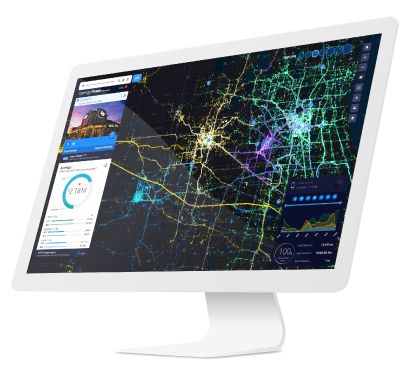What makes your customer tick?
New Geosocial data tools help brands peel back the layers to understand customer behavior better
One of the fundamental building blocks for any business is knowing who your target customer is. While traditional data sources like demographics and psychographics help to give that customer a face with information, such as age, ethnicity, income, and education levels, these only reveal a part of the picture.

What these data sources don’t reflect are:
- What are the customers thinking and feeling?
- How are they behaving?
- What are their conversations? And importantly,
- Where are they having those conversations?
Answers to these questions help businesses better understand customer intent. Customer intent is a collection of thoughts and feelings that direct customers’ decisions or actions toward a purchasing event. It is their in-the-moment purpose: “I’m going to buy a jacket,” for example. This information is now accessible to businesses through Geosocial data.
Want to see Geosocial data in action? Watch the webinar now
Geosocial data is simply location-based social media data. It is media content (mostly text but includes emojis) produced by people on social platforms that is tied to specific locations. The location component is often coordinated in latitude and longitude, but it could be a tagged place or street address as well. This type of data is publicly available on nearly every major social platform, including Twitter, Instagram, Flickr, event platforms, review sites, among many others.

Old school data sources vs. Geosocial data
For many years brands have relied on data sources such as U.S. Census data, research surveys, and purchase data from credit cards and loyalty programs in their regression models to predict sales. The challenge with these datasets is that these sources frequently deliver limited, incomplete, or outdated information that poorly predicts store sales.
Let’s take a closer look at some of these traditional data sources:
U.S. Census data: This provides fundamental insights into population size, demographics, and locations of where people live. The problem is that collecting that data is a huge task that is conducted only once every ten years. The time it takes to gather the data means that it can be quickly out-of-date almost as soon as it is published
Survey data: Research surveys have been used to gathering psychographic or behavioral data on consumers. Questions are targeted to specific topics, such as asking individuals how often they order pizza, go to the gym or shop at the grocery store. Survey data take those responses and then extrapolates that data to larger geographies to make assumptions about a larger consumer base with shared characteristics. The flaw in that assumption is that every 20-30-year-old male living of a certain income and education level living in Dallas is going to follow the same behavior patterns.
Purchase data: Credit card and loyalty data represent another important step forward to understanding purchasing history and patterns. This data doesn’t distinguish between family members in a household that might be sharing a credit card or loyalty account, or purchases that are made by a cardholder for someone else.
How Geosocial data helps target potential customers
Brands are using Geosocial data to make better, data-driven decisions. Some of the key benefits to Geosocial data are that it:
- Delivers the most up-to-date behavioral data from customers produced by customers themselves, eliminating any researcher bias
- Uses geotagging technology to reflect where those conversations are happening. Therefore, brands can understand the unique characteristics of every market and therein adapt accordingly.
- Provides an in-depth description of customer behavior with 70+ categories helping brands realize their highest-ranking customer segments
Geosocial data visualization on SiteZeus dashboard
This depth of understanding empowers brands to leverage detailed customer profiles, which can then be used to build highly predictive models that help brands to make location decisions with timely accuracy. Brands are using Geosocial data to understand their customers and the communities they come from.
[Geosocial segments] have helped us better understand who our customers are. For example, we learned that “Soccer Moms” represent a large portion of our customer base. So, we started offering kids meals”
said Phillip Anthony Messi, Leasing Assistant at Subway and one of the many users of Geosocial data. “Since using SiteZeus’ location intelligence platform, which harnesses Geosocial and Mobile Location data, we changed our store hours, and some of our stores have realized a 10%+ sales increase as a result,” Messi added.
The importance of dynamic data
Old data, like expired ingredients, produces poor results. For this reason, retail success comes down to how new, how accurate, and how well data sets are harnessed. Through a partnership with Spatial.ai, a renowned Geosocial data pioneer, SiteZeus’ location intelligence platform makes it easy for brands to better understand customers, and ultimately, to more accurately identify profitable locations within just seconds.
Ready to pick more profitable locations? Start harnessing modern Geosocial data sets today.
Free webinar on best practices & use cases for identifying customers
How to identify customers in seconds

Recommended Posts


